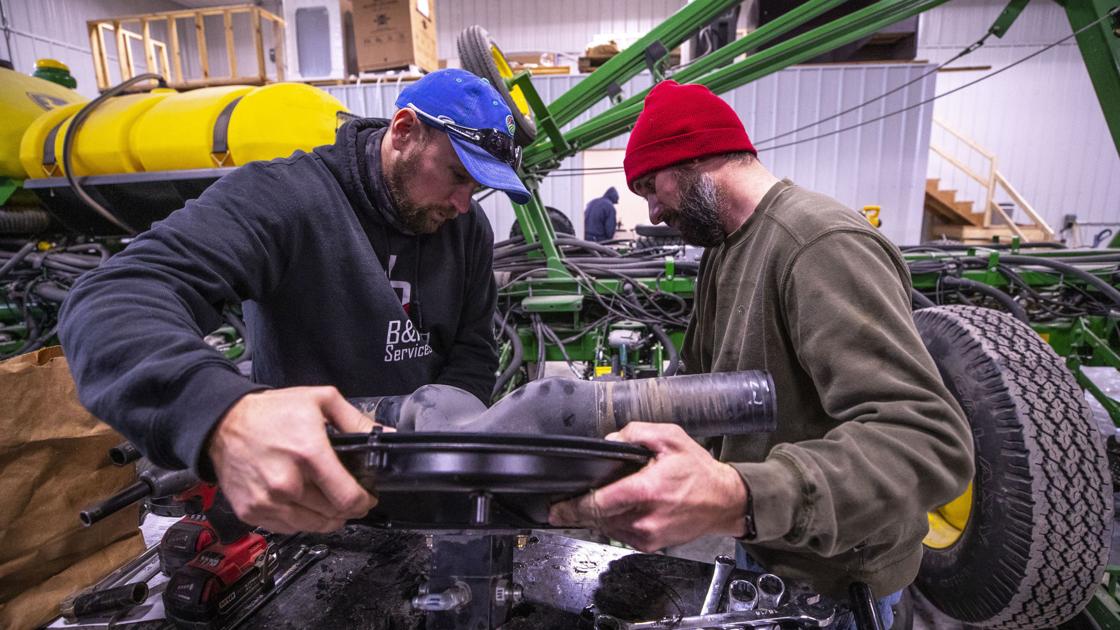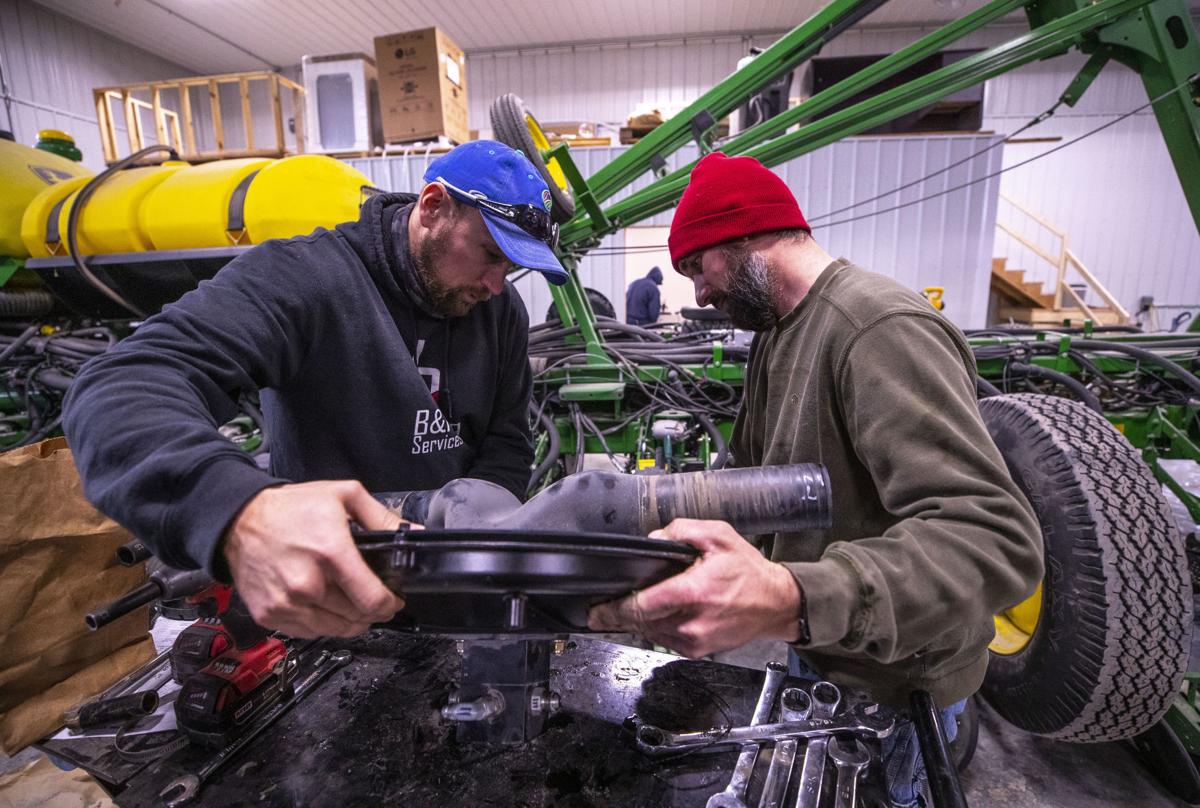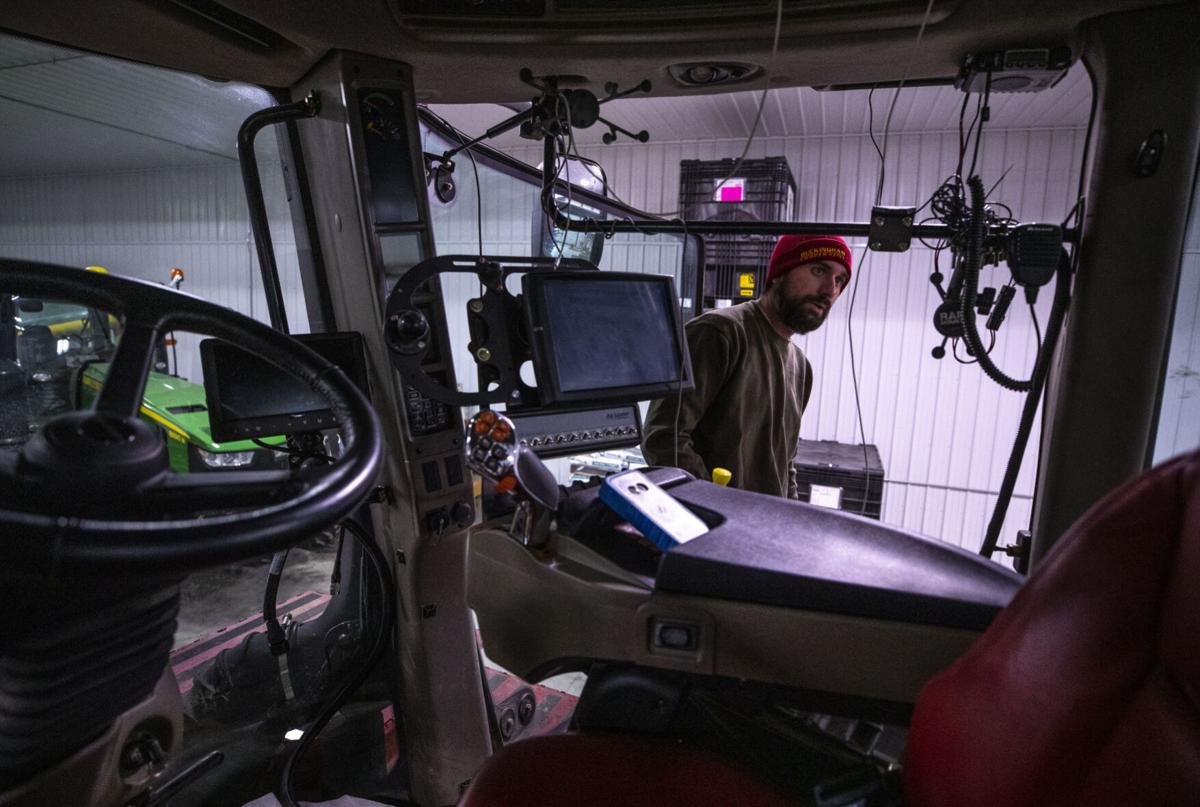
BLACK HAWK COUNTY — This time of year, crop farmers like Mark Jesse are getting their fields ready to plant hundreds or thousands of acres of corn and soybeans in the next few weeks.
To do so, they’re looking at the moisture in the soil on their fields, the upcoming rain, the dates that federal crop insurance sets for planting (April 11 for corn, April 21 for beans), and even the stock market to make their decisions.
“There are a ton of variables to take into effect,” said Jesse, who farms on around 1,000 acres in southeastern Black Hawk County and will plant about 600 acres of corn and the rest soybeans this year.
That’s par for the course for crop farmers, who juggle all the potential variables in order to get the most bang for their buck come harvest time.
“What’s normal?” asked Sam Funk, senior economist at the Iowa Farm Bureau. “There’s always that question mark of what’s going on.”
Drought potential
Looming largest this spring is perhaps the drought affecting nearly half of the continental United States, the most significant spring drought since 2013, according to the United States Drought Monitor. It stretches from the Pacific Coast to the upper Midwest and has started infiltrating northwestern Iowa as well.
While Cedar Valley farmers have so far been spared the drought, there’s always a worry it’ll find its way here.
“Every year you put that crop out, you gotta conserve for what moisture pattern you’re going to find,” Funk said, noting that different times of the season were “point critical” for that moisture, and also months away.
Soil moisture is “a concern moving forward,” said Caleb Hamer, who co-owns B&H Ag Services out of Hudson and plants around 3,700 acres of corn and soybeans across three counties.
“If given the choice, we’d rather start dry and have rain pick up as the season goes along rather than turn out dry during the summer,” he said, noting that forces crops to root down deep to find water.
Jesse agreed that was his ideal planting condition.
“A dry, early spring just makes it easier to get all of your preplant stuff done,” he said, including tillage, fertilizer application and spraying.
Terry Basol, field agronomist for Iowa State University Extension, said recent rain in Black Hawk and Grundy counties has helped. Nearby, parts of Bremer and Butler counties still remain “abnormally dry,” however.
“Hopefully, long term, that will dissipate,” Basol said, noting he tracks drought and climatology through various federal and state organizations. Nonetheless, he said, “you never know what the weather’s going to do.”
Insurance or markets?
Funk said a “very high percentage” of corn and soybean growers strictly abide by federal crop insurance dates. Planting before then risks your crop not being covered in case of early frost.
“You’ll find people typically wait until the insurance dates,” he said.
Hamer said there was a chance the markets might factor into growers’ decision-making this year. He said currently the bid for cash corn in September at ADM Corn Processing in Cedar Rapids was 36 cents a bushel higher than October.
“This may be enough incentive for some to try and push corn plantings earlier, in an effort to harvest early and catch the September market at a premium to October,” Hamer said.
Basol said that would likely only influence “growers in smaller acreages” who might try their luck planting earlier with less of a downside than someone planting hundreds or thousands of acres. But he said the market does normally affect the percentage of what farmers grow.
“If the market’s looking really, really good with corn, some guys might shift more acres of corn if they can do it,” Basol said, though he noted those decisions are usually made at the seed buying stage in late fall.
Either way, don’t be surprised to see most farmers out in the fields in the next couple of weeks.
“I would say most people have a date in early to mid-April that they’d like to see some planter wheels turning,” Jesse said.
Fundamentals
One thing that’ll never change? Watching out for yourself and your workers as the spring planting season gets underway.
“I always say this in spring planting: You’re in a hurry a lot of times, trying to get those acres covered as soon and fast as you can. Step back a little bit,” Basol said. “You can’t replace a body, hands or fingers.”
And, if you don’t want to replace a crop, either, Basol suggested making sure you’re monitoring the soil moisture before doing field tillage, and making sure the equipment is level and adjusted field to field.
“Don’t start too early,” he cautioned. “Make sure the field conditions are correct before you go in and do any field operations.”
At some point, you’ve done all you can. The rest is up to Mother Nature, said Funk.
“We’ll continue to hope, and that’s one thing about farmers,” he said. “You’re gonna put a seed in the ground and expect to raise a crop. You need to have some faith it’s gonna work out right.”
March 29, 2021 at 03:30PM
https://ift.tt/3sBDeAO
Corn, soybean growers in Cedar Valley prep for spring planting - Waterloo Cedar Falls Courier
https://ift.tt/3gguREe
Corn



No comments:
Post a Comment